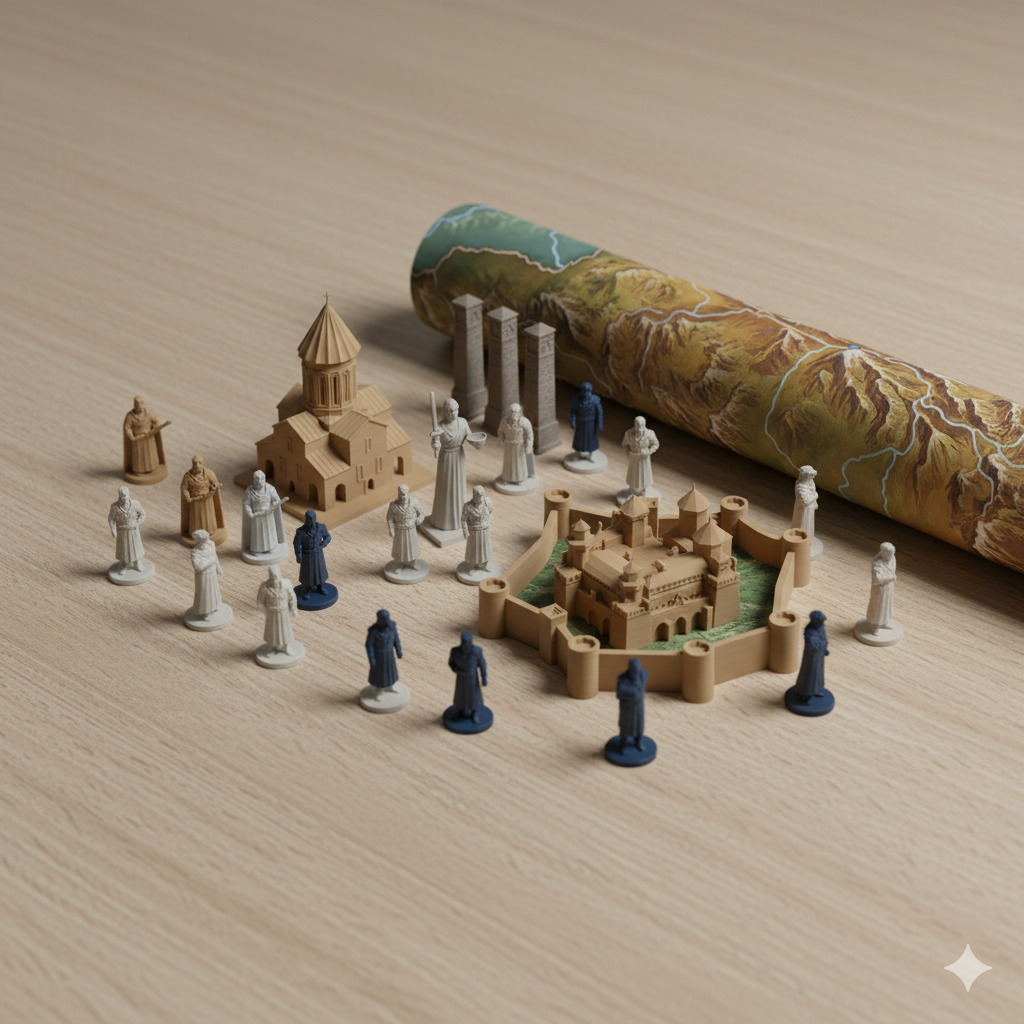Your cart is currently empty!

When a Photo Becomes a Teaching Tool: Discovering 2D to 3D Conversion
“I have an idea,” the teacher said.
He wanted to create a board game about Georgian geography – but not just any board game. Each region would be represented by its most iconic symbol: Svanetian towers for Svaneti, unique characteristics for each part of the country. And the game pieces? Famous Georgian writers, turned into three-dimensional figures.
As he described his vision, I could see it taking shape. It was ambitious. It was creative.
Could we actually make this happen?
The Technique That Makes the Impossible Possible
I’d been showing teachers in our training sessions how to convert 2D images into 3D printable models. We’d experimented with examples like the Georgian lion, demonstrating the technique using AI tools like Hyper3D. Upload a photo, let the software process it, and watch as a flat image becomes a model you can print.
But those had been demonstrations – proof of concept during training sessions.
This teacher wanted to take that technique and build an entire educational project around it. This would be his first real attempt at the conversion process, and it wasn’t for a simple demonstration. It was for something deeply meaningful: a student project that would blend geography, literature, and Georgian cultural identity.
Building Georgia, Piece by Piece
The teacher worked alongside his students throughout the process. Together, they selected which regional symbols would best represent each area of Georgia. They found images of famous Georgian writers and converted them into game pieces – historical figures becoming players in a game about their own country.
The students weren’t just helping. They were deeply involved in every decision. Which writers should be included? How should the symbols look? They watched as each piece emerged from the printer, layer by layer, adjusting and refining as they learned.
This was their project. Their representation of Georgian culture and geography.
The Exhibition Moment
When the board game was displayed at the school’s project exhibition, something remarkable happened.
Children crowded around it. Teachers stopped to study it carefully. Parents pulled out their phones to take photos. This wasn’t just another school project on a table – it was something that commanded attention.
The game wasn’t just educational. It was beautiful. It was meaningful. It celebrated Georgian geography, literature, and regional identity in a way that felt both innovative and deeply rooted in culture.
What Changed for Students
What struck me most wasn’t the impressive final product, though it was genuinely impressive.
It was how the process transformed student engagement.
These students weren’t passively memorizing Georgian regions and writer names for a test. They were actively creating physical representations of what they were learning. They cared about print quality because it was their game. They wanted to learn more about each region and writer so they could represent them accurately and respectfully.
The act of converting images and printing became inseparable from the learning itself. Geography and literature stopped being abstract subjects and became something they could literally hold in their hands.
Beyond “Can We?”
Before this project, teachers would sometimes approach me with ideas that seemed too specific, too complex, or too unique to execute. “I’d love to have [specific thing], but I’m sure that’s too difficult to make.”
The Georgian board game changed that conversation.
It proved that even if you’re a beginner at 3D printing – even if it’s your first attempt at image conversion – you can create something genuinely meaningful. You don’t need to be a 3D modeling expert. You don’t need weeks to master complex software.
You need a clear vision, good images, and the knowledge that the tools exist to bridge the gap between imagination and reality.
After this project, my son discovered the 2D-to-3D conversion capability and immediately printed a little figure of our chihuahua, Merida. If a child could think “I want a 3D version of my dog” and make it happen in an afternoon, imagine what students could create when challenged to represent what they’re learning.
What This Means for Education
The board game opened something bigger than just one successful project. It demonstrated that the question isn’t “Can we make this?” anymore.
The question is “What do we want to make?”
And suddenly, the answers from teachers and students became far more ambitious, far more creative, and far more connected to real learning.

Leave a Reply